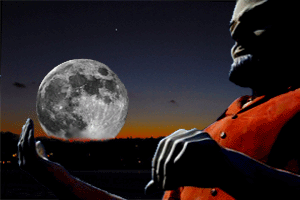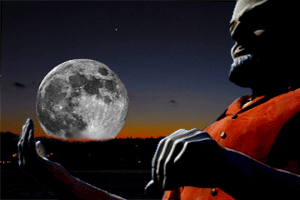
People have a propensity for attraction to extremes. We are fascinated by the biggest, the smallest, the farthest, the nearest, the most wildly colorful—you name it. We're Extreme Adjectives Junkies!
This point was brought to my awareness again leading up to last Saturday's "SuperMoon" event: when the Full Moon phase on March 19 coincided with the Moon being at perigee--the closest point to Earth in its elliptical orbit--and therefore at its largest apparent size, its brightest, and its most influential, tidally speaking. By the numbers, this periodic event hadn't happened for 18 years--though it should be noted that the Moon gets just as close to the Earth every month, but it's usually not a Full Moon when it does.
It seems every news media source—on air, on web, on print—was running the story, and there was a great deal of public interest…which was, of course, mostly fueled by the media coverage! I got calls from several news agents wanting the facts and my thoughts about the SuperMoon—and of course what they wanted to hear was that the Moon's closeness and size and brightness and gravitational attraction were all magnitudes greater than normal, that the moment had measureable effects on tides, earthquakes, and volcanic eruptions, and of course that there would be a bumper crop of werewolves and lunatics running around the night….
